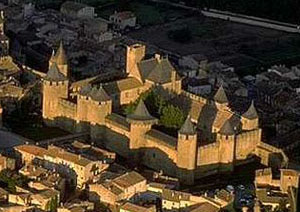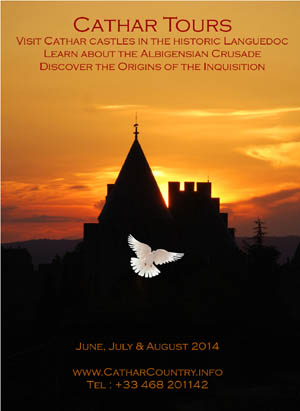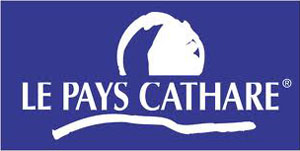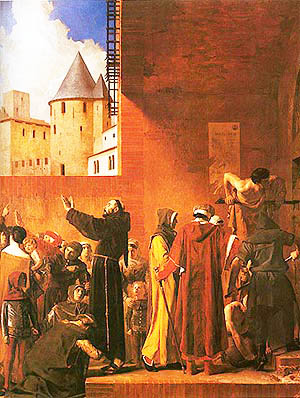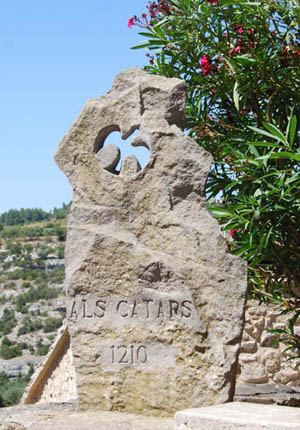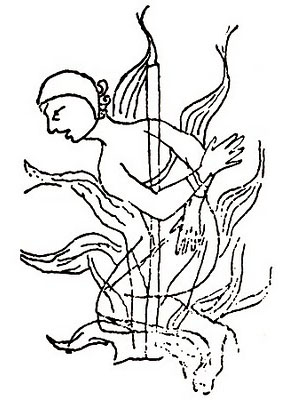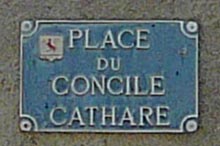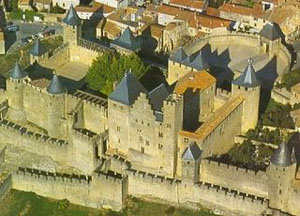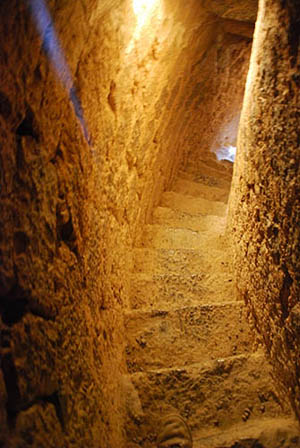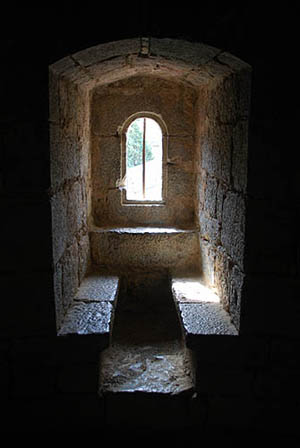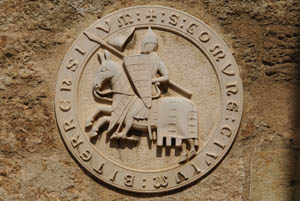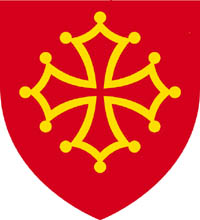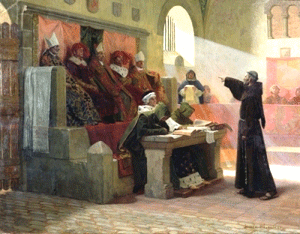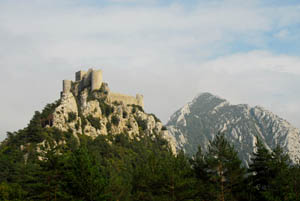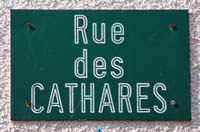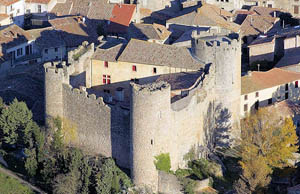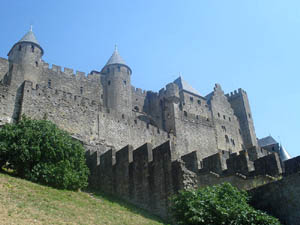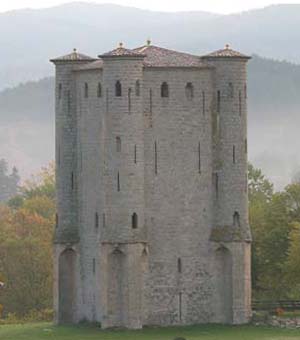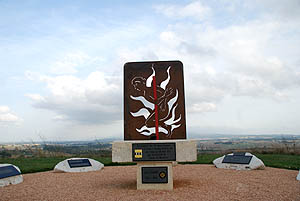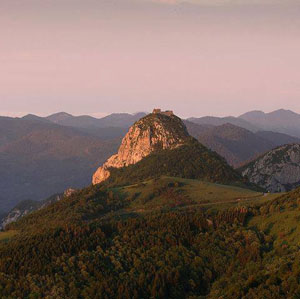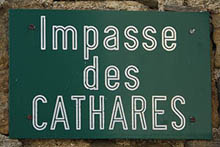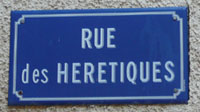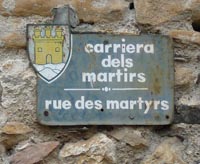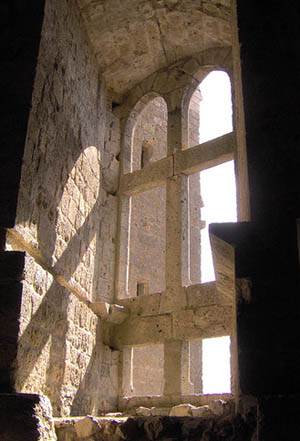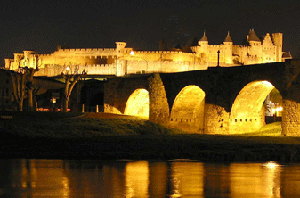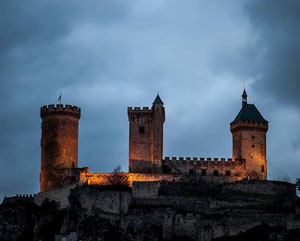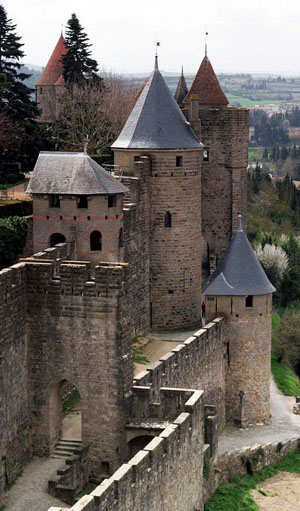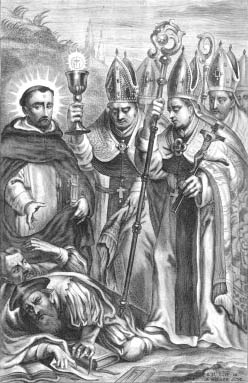Cathars and Cathar Beliefs in the Languedoc
|
|
||||||||||||||||||||||||||||||||||||||||||||||||||||||||||||||||||||||||||||||
|
|
|
|
|
|
|||||||||||||||||||||||||||||||||||||||||||||||||||||||||||||||||||||||||
|
|
||||||||||||||||||||||||||||||||||||||||||||||||||||||||||||||||||||||||||||||
|
|
Today, there is a thriving Cathar tourist industry in the Languedoc. Many communes own the ruins of the local castles and charge a small fee for entry. For your entry fee you get a small brochure, usually available in (imperfect) English, generally concentrating on the architecture rather than on history. If you are interested in visiting Cathar sites in the Languedoc, you basically have two options:
Beware that there are very few organisations offering solid information about the Cathars and lots offering an assortment of "spirituality": holistic healing, reincarnation, mysticism, conspiracy theories, esoteric history, shamanism, mystery religions and so on. The webmaster, James McDonald, offers personally-conducted week-long scheduled guided tours each year, and also private tours. Click here to visit the Cathar Country Website for more information. He has also created a number of self-guided audio tours. You will need to download the voicemap app, and then the specific tour you are interested in, and follow the instructions. One of the advantages of these tours is that you can do them at any time, 365 days a year. You can pause and restart them, and even repeat them. Locations currently available are:
For recommended books to read to get the most out of your visit, click on the following link for a recommend list of books in English
Here follows some useful background information: The area governed by the Counts of Toulouse and their vassals covers a large part of modern France - almost a third of it. Throughout much of that area lie the ruins of castles that gave shelter to the Cathars in the thirteenth century and were besieged, often several times. There are few material vestiges of the Cathars. Mainly, this is because they rejected and despised all material possessions. They had no church buildings, no chapels, cathedrals or abbeys. They has no gold chalices, no crosses, no reliquaries, no bejewelled mitres, silk robes or fine paintings or sculptures. They did have houses and cemeteries, but none of them survive. Their houses were pulled down, Baptised Cathars were burned alive. Their ashes were scattered in rivers to preclude even the possibility of their remains becoming holy relics. If they were already dead and buried, their bodies would be exhumed, and burned by the Inquisition. Cathar towns like Fanjeaux have lost their city walls and many of their buildings. This leaves precious little to see. Cathar documents exist, but they are scattered around the world, from Paris to Dublin and the Vatican archives. Castles where Cathars sought refuge are mostly destroyed, often replaced by later French castles that are themselves in ruin. The one castle that could lay claim to being a "Cathar Castle" in the sense that it was fortified specifically to protect Cathars (Montsegur) was destroyed by the French and replaced by a new Royal castle, only the ruins of which survive. If you know where to look (and Tourist Offices will be of little help here) you can still find chateaux that date from the Cathar period. And there are other vestiges too. Houses of the Inquisition have survived, as have cathedrals and churches where the Counts of Toulouse were flogged for their Cathar sympathies, the Abbeys where the Albigensian Crusade was planned. Cistercian, Dominican and Franciscan Orders still survive. There are also monuments to fallen Kings and crusaders, memorials to Cathar "martyrs", archaeological digs, the sites of various massacres, and so on. There is even a surviving castle that hosted a Cathar Council. Not to be underestimated are many other survivals from the Middle Ages that we take for granted: the spectacular Pyrenees, vast forests, thousands of miles of trails the Cathars walked, the plants and animals they knew, the mountain air they breathed, the early morning mist flowing like water from one valley into the next that they too must have been familiar with. We even have their language, which was then called Roman, and which the French later called the Langue d'Oc, poets called Provençal, and modern scholars call Occitan. Not least is their enduring memory in the Languedoc: the flag of the medieval Counts of Toulouse flies everywhere throughout their ancient territories. Locals still recite from memory the scathing Occitan assessment of the hated Simon de Montfort from the contemporary Song of the Crusade. The Counts and their Cathar vassals are still remembered and locals affirm that "You are not altogether dead as long as someone remembers your name".
|
|
||||||||||||||||||||||||||||||||||||||||||||||||||||||||||||||||||||||||||||
|
|
Photographs |
|||||||||||||||||||||||||||||||||||||||||||||||||||||||||||||||||||||||||||||
|
|
|
||||||||||||||||||||||||||||||||||||||||||||||||||||||||||||||||||||||||||||
|
|
Further Information on Cathars and Cathar Castles |
|||||||||||||||||||||||||||||||||||||||||||||||||||||||||||||||||||||||||||||
|
||||||||||||||||||||||||||||||||||||||||||||||||||||||||||||||||||||||||||||||
|
|

|
|||||||||||||||||||||||||||||||||||||||||||||||||||||||||||||||||||||||||||||
|
|
|
|||||||||||||||||||||||||||||||||||||||||||||||||||||||||||||||||||||||||||||
|
|
 |
|||||||||||||||||||||||||||||||||||||||||||||||||||||||||||||||||||||||||||||
|
||||||||||||||||||||||||||||||||||||||||||||||||||||||||||||||||||||||||||||||
|
|
|
|
|
|
|||||||||||||||||||||||||||||||||||||||||||||||||||||||||||||||||||||||||
|
|
||||||||||||||||||||||||||||||||||||||||||||||||||||||||||||||||||||||||||||||
|
||||||||||||||||||||||||||||||||||||||||||||||||||||||||||||||||||||||||||||||






